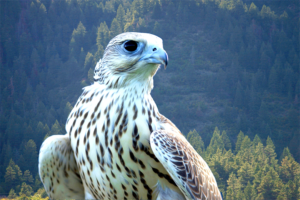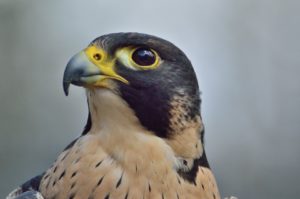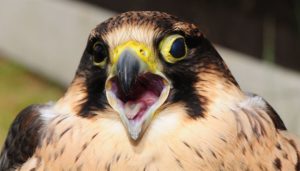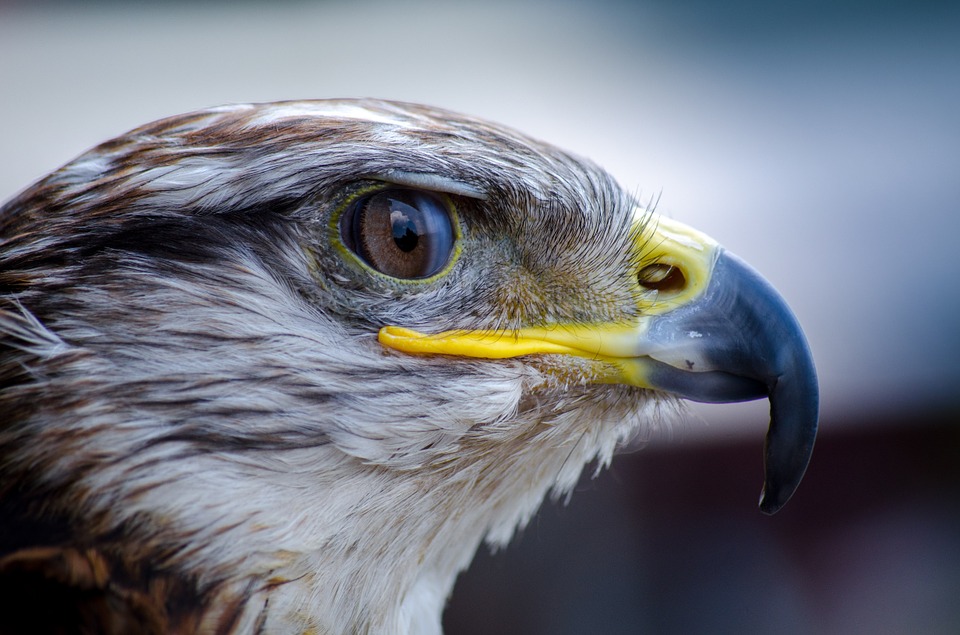Falcons are birds of prey that belong to the Falco genus. There are about 40 known species of falcons in the world. They can be found on every single continent except Antarctica. Take a look below for 27 more fun and bizarre facts about falcons.
1. Falcons can be found in almost all types of habitats. For example, they’ve been seen in Arctic tundras, wetlands, prairies, savannas, deserts, coastal areas, forests, mountains, rainforests and even urban areas.
2. The gyrfalcon, Falco rusticolus, is the largest of the falcon species. It can be up to 61 centimeters, or 24 inches, long with a wingspan of 130 centimeters, or 51 inches. It can weigh up to 1,350 grams, or 47.6 ounces.
3. Wild falcons live between 12 and 20 years, depending on the species. They’re known to live up to 25 years in captivity due to better living conditions.
4. The Seychelles kestrel, Falco araeus, is the smallest falcon species. They can be between 18 to 23 centimeters, or 7 to 9 inches, long with a wingspan of 40 to 45 centimeters, or 16 to 18 inches. They can weigh between 73 and 87 grams, or 2.5 and 3 ounces.
5. Most falcon species are dark brown or grey colored with white, black and yellow spots and markings on its body.
6. They are characterised by their bullet shaped body, which is long, with pointed wings, a medium to long tail, long toes with sharp, hooked claws and a short, hooked, usually notched bill.

7. Falcons are diurnal birds, which means that they hunt almost exclusively in the daylight.
8. They have excellent eyesight, which they use to look for their prey. They can see up to 8 times more clearly than the best human eye.
9. They’re strong, fast fliers with great aerial agility. This makes them excellent hunters that are capable of taking prey 6 times their own body weight. Usually, they will kill their prey cleanly by breaking their back.
10. A falcons sense of smell is poor and their hearing is decent, which is why they rely almost exclusively on their eyesight to hunt.
11. They kill their prey with their beaks, using a “tooth” on the inside of their beaks. Unlike hawks, eagles and other birds of prey in the Accipitridae family, which use their feet to kill.
12. Falcons are carnivores, which means that they primarily eat meat. Their diet consists of rodents, frogs, fish, small reptiles, bats, and other birds.
13. Only hours after the eat, falcons will regurgitate a pellet that contains any feathers, fur or small bones that they have swallowed accidentally.
14. They’re generally known as solitary birds that only come together to mate. Although some species are known to stay in the same place, the majority are migratory birds that travel more than 24,000 kilometers, or 15,000 miles, per year.
15. Falcons mate for life and breed in the same territory every year. They re-establish their bond each year through a complex set of ritualistic courtship behaviors. The male falcon makes bold aerobatic flights that include loops, tight turns and swooping dives while the female falcon observes.

16. Their nesting habits can vary as they construct loosely built nests in trees, lay eggs on albee ledges on rocky cliffs, or use hollow trees or man made nest boxes.
17. Female falcons lay between 2 and 5 eggs. The colors range from white to red, depending on the species. The eggs are incubated for 30 days by the female falcon.
18. Both female and male falcons look after their chicks until they’re big enough and strong enough to fend for themselves. Both female and male falcons will leave the nest to gather food for the young.
19. Falcon chicks fledge between 40 to 45 days after hatching. They remain dependent on their parents for up to 3 months.
20. Falcons have been used in falconry for at least 3,500 years.
21. The peregrine falcon is known for its speed, as it can reach flight speeds of over 320 kilometers per hour, or 200 miles per hour, during its hunting stoop. This makes it the fastest member of the animal kingdom.
22. Falcons can process four types of light while humans can only process 3.

23. They’re able to see in the night and they’re able to see ultraviolet rays.
24. Female falcons are usually larger than male falcons.
25. Some small falcons with long, narrow wings are called “hobbies,” while some falcons that hover while hunting are called “kestrels.”
26. The Late Latin word “falco” is believed to derive from “falx” meaning a sickle, referencing the claws of the bird.
27. In Middle English and Old French, the term “faucon” refers generically to several captive raptor species.




